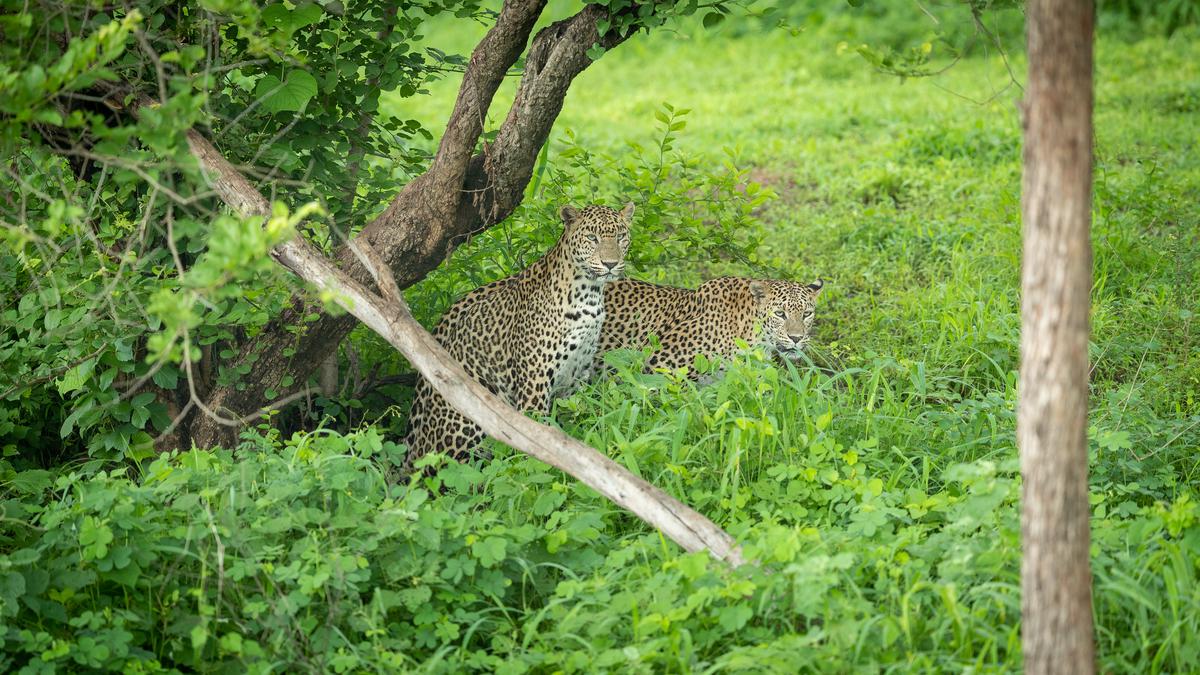With Keshod Airport reopening soon, properties in Gir prepare to greet pandemic-weary wildlife enthusiasts and luxury travellers as post-lockdown jungle escapes become popular. We explore the forest, guided by naturalists and Maldharis, in search of lions
With Keshod Airport reopening soon, properties in Gir prepare to greet pandemic-weary wildlife enthusiasts and luxury travellers as post-lockdown jungle escapes become popular. We explore the forest, guided by naturalists and Maldharis, in search of lions
“I fed the lion a feast worth ₹5 lakhs,” boasts the Maldhari patriarch, seated straight and proud on the charpai of his hamlet outside Sasan Gir wildlife sanctuary, telling the tale of how a lion hunted his beloved prize cow.
He and his family of five are among the few tribal folk, called Maldharis, to have taken up the Gujarat Government’s offer of rehabilitation outside the forest. Which means that they live in a sprawling hamlet (called a ness) of their own and rear ducks and hens along with his beloved native Gir cows, while most of his kin continue to graze their cows in the depths of the lion-habitated forest, shooing away entire prides with their sticks.
The family’s affection for its cattle is clear, and yet, they hold no grudges against Gir’s lions for their kills. “Ït was her fate to sustain the lions and not us,” he says, recalling with a chortle the utter shock of local naturalists who suddenly happened upon the large cow, being feasted upon by a massive lion, right on the way of their vehicle.
This stretch of the forest on the Western edge of India sees a curious cohabitation of man and beast, tribal and ranger. “The forest is well over 1,000 square kilometres. Of this, about 250 to 300 square kilometres is the core protected forest, where no humans can enter — not even the tribes. On the edge of this core area lies the wildlife sanctuary, which is home not only to leopards, hyenas, antelopes, vultures and lions, but also to around 55 Maldhari nesses. The Maldharis have always lived in this forest, since long before it was even declared a sanctuary. Their right to stay here was legally recognised by the Nawab of Junagadh,” says Varun Taneja, a naturalist.
Home to many
According to an official report in 2020, there are about 674 Asiatic Lions in Gir National Park and its peripheral forests, panning multiple districts of Gujarat
As per the National Park’s official website, it is also home to over 200 bird species, including “critically endangered white-backed and long-billed vultures”
The National Park also houses deer species like sambar and four-horned antelopes, leopards, jackals, striped hyenas and 40 species of reptiles and amphibians
It is Varun’s job to demystify the ways of the forest, and of all the flora and fauna who call it home, to tourists. He sits back to do so over a cheese platter and crisp masala papad at Aramness Gir, one of the newest luxury safari lodges to have opened up in the third, outermost stretch of the forest.
As dusk falls, birds quieten and crickets chirp louder in tune with distant drum beats from nearby villages, Varun explains: “We are in the healthy buffer zone, also called the range forest. This is the outermost periphery, where limited human activity is allowed with prior permission from the forest department.”
This means that quite a few tourist resorts have opened up in this region, in anticipation of post-lockdown vacations and breathless escapes from city life. These properties also await the opening of Keshod Airport, the reopening of which after a gap of 21 years was recently announced by the Ministry of Civil Aviation. The airport is expected to cut down the four-hour drive to Gir down to about 45 minutes, and thus draw more national and international tourists to the sanctuary.
The private pool of a kothi at Aramness, a luxury safari lodge
Until that happens, tourists continue to make their way by road from Rajkot airport about 164 kilometres away, or Diu airport about 59 kilometres away. Regardless of where you come from, if your final destination is Aramness Gir, the last five minutes of your journey will be along a narrow forest dirt track, where you may or may not have to pause to gaze at frolicking deer or snoozing lionesses.
A date with bauhinia
The premises of Aramness boast restored ponds and reclaimed vegetation, most of which comprise local flora. The twelve-acre property, found incapable of supporting agriculture, was taken over by Aramness founder Jimmy Patel with the aim of restoring the land to its natural state. Around 40% of the property now comprises a towering common haveli and 18 sprawling kothis, along with paved pathways, a spa, a coffee house, a pool and staff quarters, all built with reused stone and reclaimed wood in tune with Maldhari motifs and architecture.
Currently running at ₹75,000 per night (inclusive of meals and refreshments, as well as the cost of one daily safari), the kothis house two people each, and are lushly furnished, complete with an outdoor pool and a selection of snacks provided by local, woman-led businesses.

The coffee shop at Aramness looks out upon local vegetation
“The remaining 60% of the land was dug up and replanted. The process took years. We now have three ponds that are self-sustaining and support lilies and water birds. We also have local trees like bauhinia, golden shower and red cotton silk. We have also dispersed dried grass seeds, and are waiting for the monsoons to hit them,” says Varun.
He is one of three naturalists employed by the property for the edification of guests. Clearly, this lodge offers “luxury” in more ways than one: for those who find a personal swimming pool and a traditional brass swing unnecessary to their forest escape, the lodge has three pocket field guides that serve as checklists for flora, bird life and animal life of the forest.
Aramness is fairly rich in fauna: “We participated in the Gujarat Bird Count in January, and spotted 47 kinds of birds in and around the property on that one day alone,” beams Varun.

Leopards amid the greens at Gir
In the sweltering 5 pm heat, our gypsy trundles its way through the meandering forest tracks. Palash petals hark out burning red from a distance, even as the rest of the forest has already begun to wilt under the hot March sun. The only other tree that seems immune to the heat, is the heady Carissa carandas. Short stretches of forest turn cool, thick with perfume wherever the karonda decides to grace the land with its presence.
But wait, there is one sight more welcome than the karonda. Up ahead lies a massive kill — and a few feet away lie the small pride that just finished feasting upon it. A mother lioness with her newborn cubs, out in the open for the first time since their birth in January. The magnificent mother looks as intimidating as her brood looks wide-eyed, taking in the sights and sounds of excited humans for the first time in their lives.
























